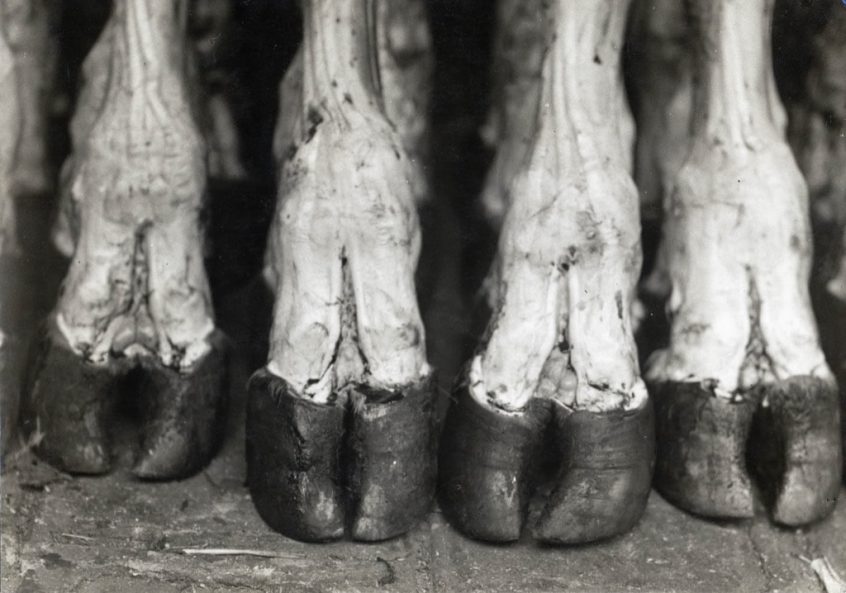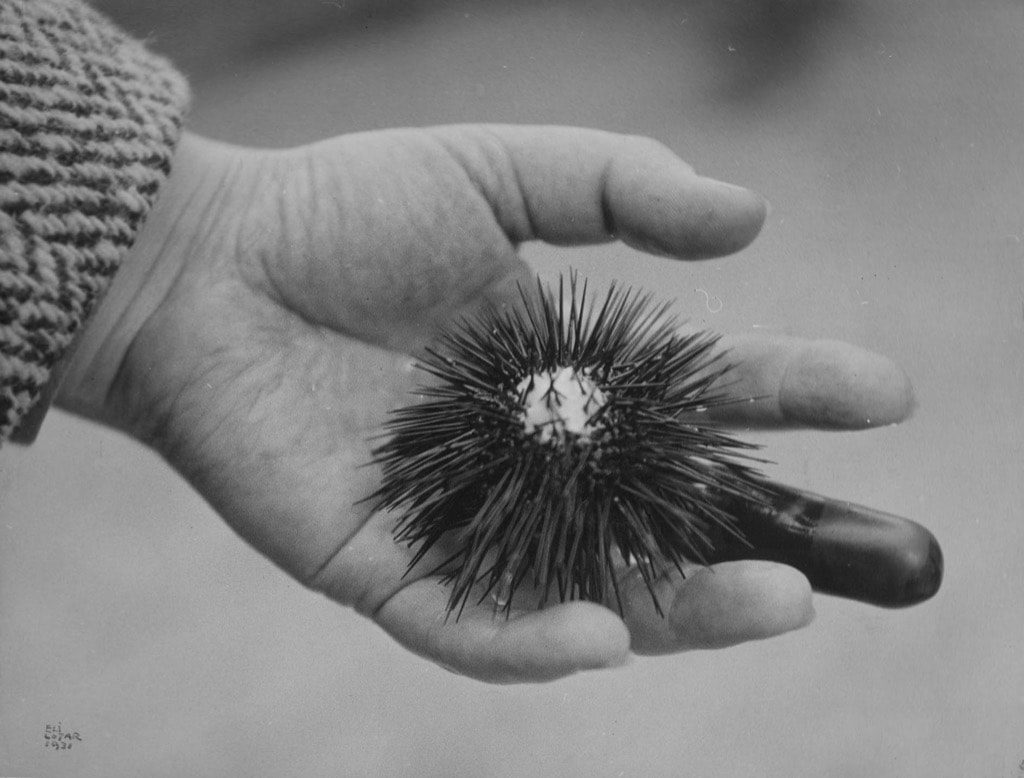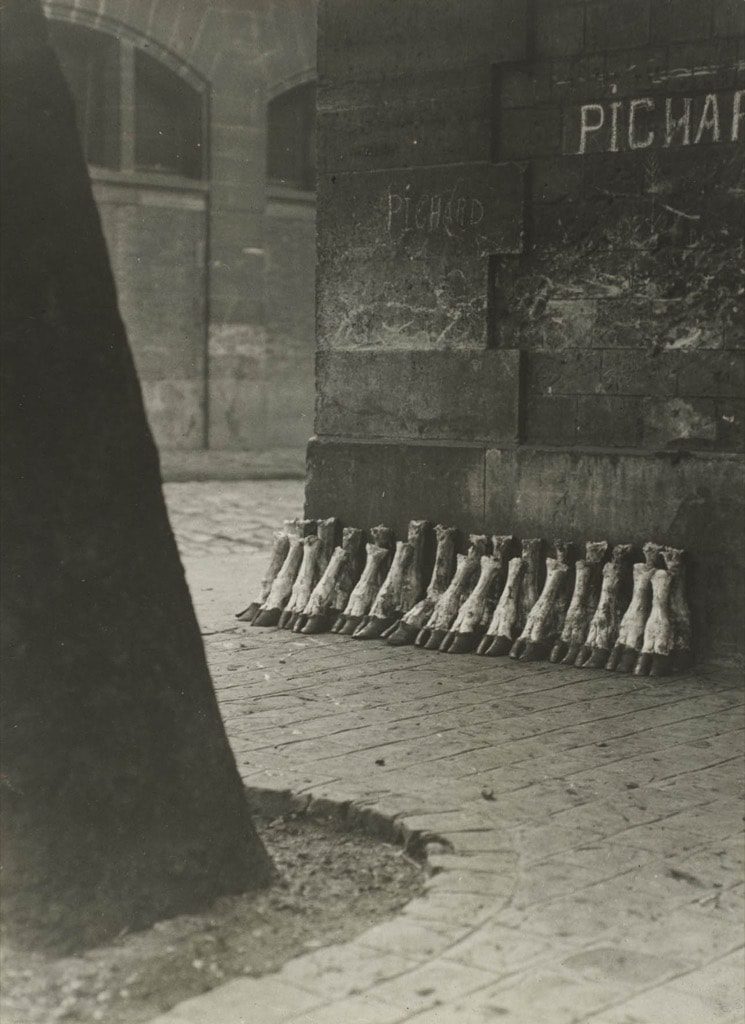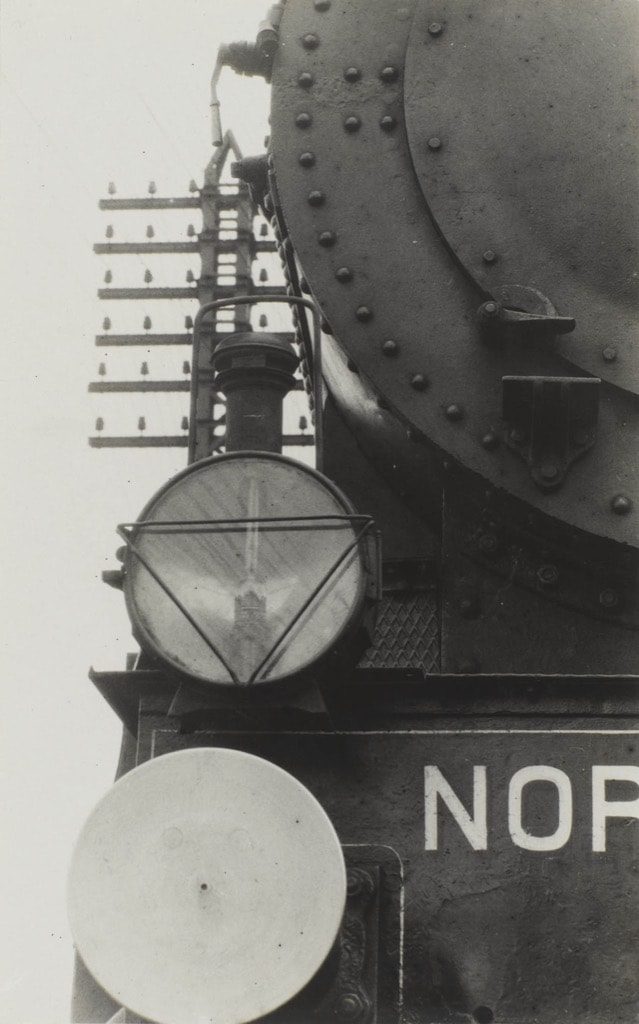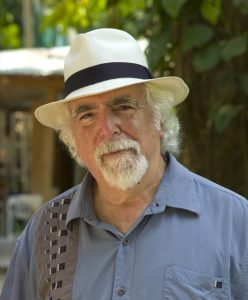If you only had a half hour to visit the Jeu de Paume’s new exhibitions, I would recommend that you sit in front of Eli Lotar’s film “Aubervilliers” a shocking and yet poetic vision of Paris’ suburbs in 1945. The commentary written by Jacques Prévert is beautiful and the images are from another world. It is a reflection on happiness in total squalidness, and it teaches us much about nowadays lifestyles.
But of course take your time and walk around the exhibitions organized on three floors. Eli Lotar a French photographer of Romanian origins, was born in 1905. And before turning 30, he had revolutionized the way photographers look at daily life. His images of machinery, men and women and little jobs, bring a new eye to detail in photography. He is not afraid of shooting people’s feet on the street, mechanical details of the Eiffel Tower or of aircrafts, boats, trains and he has a love for the minuscule which has inspired many future photographers.
But he is above all a militant. A member of “Association des écrivains et des artistes révolutionnaires” in 1933, he fights along Luis Bunuel in Spain and Antonin Artaud in France in order to put into the limelight poor living conditions and worker’s hard lives. His photos of la Villette’s meat market and of Las Hurdes, a village full of starving people in Spain, are cruel, and even his pictures of Greek Cyclades have a very orignial touch.
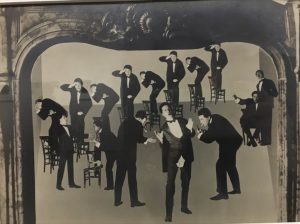
Untitled, 1929-1930, photomontage in a book by Antonin Artaud and Roger Vitrac, “Le théâtre Alfred Jary et l’hostilité publique”, Bibliothèque historique de la Ville de Paris
Born in Paris, the illegitimate son of a Romanian poet and a teacher Constanta Zissu, Eliazar Teodorescu, spent his childhood in Bucarest and returned to Paris at 19. He learns photography with Germaine Krull and soon becomes a photographer on film sets. This allows him to meet Jacques Prévert, Jean Renoir, Yves Allégret…
During the war, he befriends Alberto Giacometti in Switzerland, whom he later photographs extensively in his studio.
There is strangely an episode missing in the show, that of his Indochina photographs in 1938.
The other exhibition, videos by American artist Peter Campus, focuses on the 1970’s. The visitor is part of the video where he is filmed when he enters the spectrum of the camera. His still videos of the harbor of Pornic in Brittany are very pretty although I am not sure how they differ from a photo..
Musée du Jeu de Paume, served as a triage space for all works of art stolen by the Nazis during the war, and curator Rose Valland meticulously noted every destination of every painting. It is a beautful monument in the Tuileries gardens.
The current show of Eli Lotar is cosponsored by Centre Georges Pompidou in celebration of their fourtieth anniversary. The program is ultra trendy and contemporary but I am not sure it is always at the top quality it should be at. (until May 28)
Share this Post
